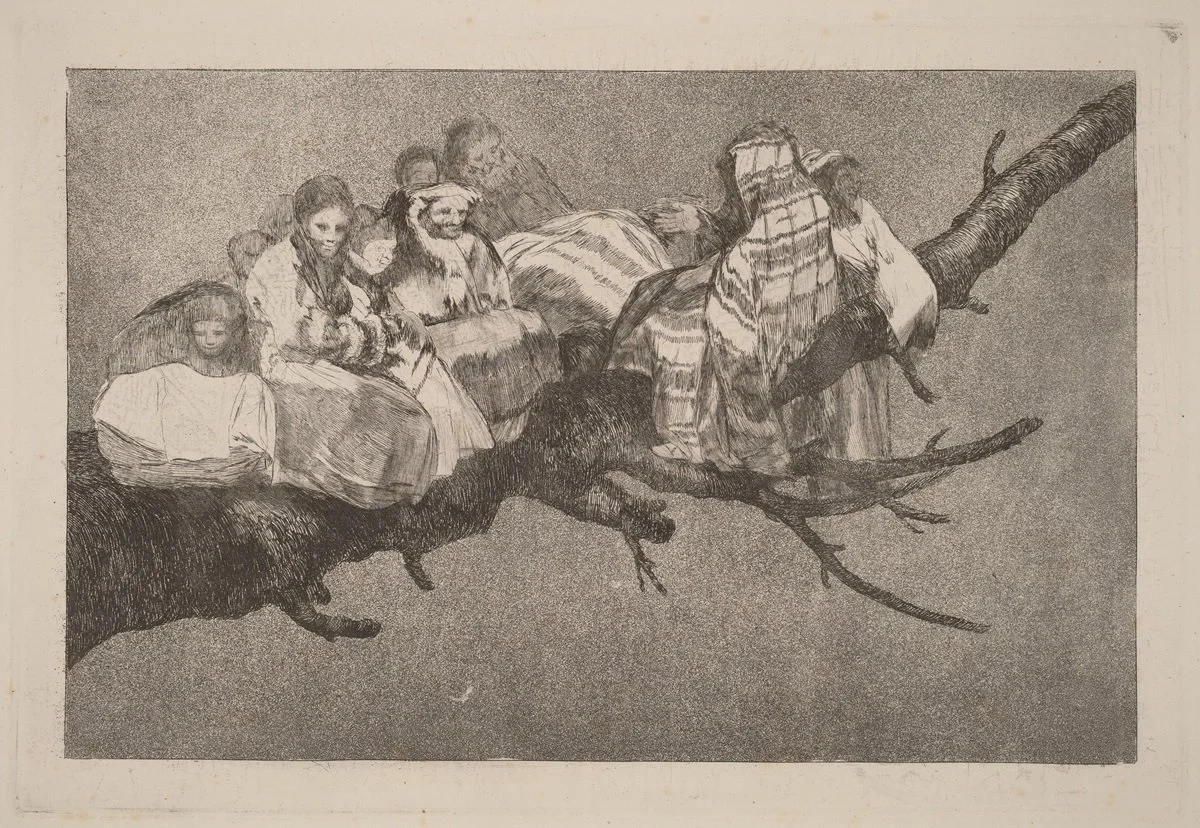Francisco de Goya (b. 1746, Fuentedetodos, Spain)
Disparate Ridiculo (Ridiculous Folly)
ca. 1816–19, published 1864 (first edition), etching, aquatint and drypoint, plate: 25.4 × 35 cm.; framed: 43.5 × 59.35 × 2.55 cm.
National Gallery of Art, Washington, marked as public domain.
Nestling in a bare tree, people listen to a figure almost entirely covered by a striped mantle. Who is this person and is their message one of real or false hope? What do you think Goya’s caption, Ridiculous Folly, suggests?
READ ABOUT THE BACKGROUND HERE…
The print was produced after years of war, poverty and famine made it difficult for him to reimagine a better future. The group seems to symbolise the desperate Spanish nation which the press often spoke about as a tree.

